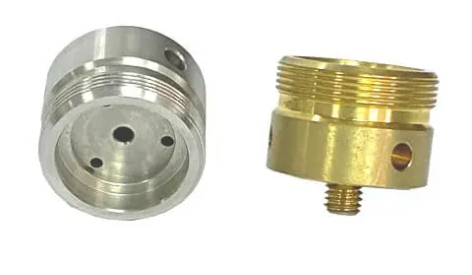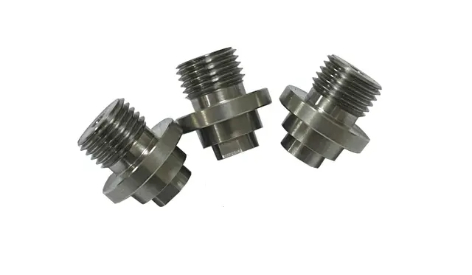Views: 0 Author: Site Editor Publish Time: 14-07-2025 Origin: Site








In the world of industrial systems, pumps and valves are integral components that help control the movement of fluids through pipelines, machinery, and equipment. These parts are essential for ensuring the smooth and efficient operation of processes in a variety of industries, including water treatment, chemical processing, oil and gas, and manufacturing. However, like any mechanical system, pumps and valves are prone to a range of issues that can affect performance, increase maintenance costs, and lead to unexpected downtime.
Pumps are vital to many industrial applications, but they can experience issues that hinder their ability to move fluids efficiently. Here are some of the most common problems with pumps and how to address them.
What is Cavitation?
Cavitation occurs when the pressure inside a pump drops below the vapor pressure of the liquid being pumped, causing vapor bubbles to form. When these bubbles collapse, they can cause severe damage to the pump's components, leading to reduced efficiency, noise, vibration, and even physical damage to the pump casing or impeller.
Causes of Cavitation:
Low Inlet Pressure: Insufficient suction pressure at the pump inlet can cause cavitation.
High Liquid Temperature: Warmer liquids have lower vapor pressure, increasing the likelihood of cavitation.
Improper Pump Sizing: Pumps that are oversized or undersized for the application can experience cavitation due to mismatched flow rates and pressures.
How to Prevent Cavitation:
Ensure Proper NPSH (Net Positive Suction Head): Make sure that the pump is operating with the proper NPSH, which helps avoid cavitation.
Check Pump Sizing: Ensure that the pump is correctly sized for the system's flow rate and pressure requirements.
Control Liquid Temperature: Avoid excessive heating of the fluid being pumped, as high temperatures can exacerbate cavitation.
What is Loss of Prime?
Loss of prime occurs when the pump is unable to draw fluid from the suction line, often causing the pump to run dry. This can lead to overheating and damage to the pump components.
Causes of Loss of Prime:
Air Leaks in the Suction Line: Even small air leaks can prevent the pump from priming properly.
Inadequate Suction Head: Low suction head can cause air to be drawn into the pump, leading to a loss of prime.
Blocked Suction Lines: Obstructions in the suction line, such as debris or sediment, can prevent proper fluid intake.
How to Resolve Loss of Prime:
Inspect the Suction Line for Leaks: Check for air leaks and seal any gaps to restore prime.
Ensure Adequate Suction Head: Make sure the suction line is properly designed to provide enough pressure for prime.
Clear Blockages: Remove any blockages in the suction line to allow proper fluid flow.
What is Excessive Vibration?
Excessive vibration in a pump can indicate that the components are not functioning properly. This could be caused by mechanical issues such as misalignment, damaged bearings, or worn-out parts.
Causes of Excessive Vibration:
Misalignment of Shaft or Components: When the pump shaft is misaligned with the motor or other components, it can cause imbalance and excessive vibration.
Worn Bearings or Bushings: Damaged bearings or bushings can cause instability in the pump's operation.
Imbalanced Impeller: An impeller that is out of balance can cause vibrations.
How to Fix Excessive Vibration:
Align Components Properly: Check the alignment of the pump shaft and motor to ensure they are properly aligned.
Replace Worn Bearings: Inspect the bearings and bushings regularly and replace them as needed to prevent vibration.
Balance the Impeller: Regularly inspect the impeller for damage and ensure it is balanced to avoid excessive vibration.
What Causes Seal Leaks?
Seals and gaskets play a crucial role in preventing leaks in pumps. When these components wear out, fluids can escape, leading to potential system failures and safety hazards.
Causes of Seal Leaks:
Worn Seals or Gaskets: Over time, seals and gaskets deteriorate due to the continuous pressure and fluid exposure.
Improper Installation: Seals that are improperly installed can fail to provide the necessary sealing effect.
Excessive Pressure or Temperature: Extreme operating conditions can cause seals to degrade more quickly.
How to Fix Seal Leaks:
Inspect and Replace Seals Regularly: Make seal inspections a part of routine maintenance to catch wear and tear early.
Ensure Proper Installation: Always follow manufacturer instructions when installing seals or gaskets to ensure they are positioned correctly.
Check Operating Conditions: Ensure that the pump is operating within the recommended pressure and temperature limits.

Valves are equally critical to industrial systems, and issues with valves can lead to leaks, pressure fluctuations, and flow regulation problems. Here are some common valve issues and how to address them.
What Causes Valve Leaks?
Valves are designed to regulate the flow of fluids, but over time, they may develop leaks due to wear, corrosion, or damage.
Causes of Valve Leaks:
Worn Seals or Seats: The seals or seats inside the valve can degrade, causing leaks.
Corrosion: Corrosive fluids or environmental factors can cause damage to valve components.
Improper Valve Selection: Using the wrong valve type for a specific application can lead to leaks due to mismatched pressure ratings or fluid compatibility.
How to Fix Valve Leaks:
Inspect and Replace Seals and Seats: Regularly inspect valves for worn seals and seats and replace them as necessary.
Check for Corrosion: Inspect for signs of corrosion and replace damaged valves or valve components.
Select the Right Valve Type: Ensure that the valve selected is appropriate for the specific application, considering factors like pressure, temperature, and fluid type.
What Causes Valve Sticking or Failure?
Valves may become stuck or fail due to a variety of mechanical or material-related issues. This can lead to an inability to regulate flow, causing operational inefficiencies.
Causes of Valve Failure:
Wear and Tear: Over time, valve components such as stems and seals can become worn, causing them to stick or fail.
Corrosion or Deposits: Build-up of debris or corrosive substances can cause valves to seize or fail.
Material Incompatibility: Using valves made from materials that are not compatible with the fluid being handled can lead to failure.
How to Resolve Valve Sticking or Failure:
Clean the Valve: Remove any debris or deposits that may be causing the valve to stick.
Replace Worn Components: Check the valve components for wear and replace them as needed.
Ensure Material Compatibility: Ensure the valve materials are suitable for the fluid being handled to avoid material degradation.
What Causes Pressure Fluctuations?
Improperly sized valves can lead to pressure fluctuations, which can cause damage to the system and reduce overall efficiency.
Causes of Pressure Fluctuations:
Incorrect Valve Sizing: If a valve is too large or too small for the system, it can cause pressure imbalances.
Damaged Valve Components: Worn or damaged valve components can lead to improper flow regulation, resulting in pressure fluctuations.
How to Fix Pressure Fluctuations:
Check Valve Sizing: Ensure that valves are correctly sized for the system's flow rate and pressure requirements.
Replace Damaged Valve Parts: Inspect the valve for any damaged components and replace them to restore proper flow regulation.
What Causes Backflow?
Backflow occurs when fluid flows in the wrong direction, potentially causing contamination or damage to the system.
How to Prevent Backflow:
Install Check Valves Properly: Ensure that check valves are installed correctly and are functioning properly to prevent backflow.
Regular Maintenance: Inspect check valves regularly to ensure they are not stuck or damaged.

Preventing issues before they occur is essential for maintaining the longevity and reliability of pumps and valves. Here are some preventive measures that can help identify and solve potential problems before they escalate.
Scheduled inspections and maintenance are key to identifying problems early and preventing costly breakdowns. Regularly checking the condition of pumps, valves, seals, and gaskets will help detect wear and tear before it leads to failure.
Correctly sizing and selecting materials for pumps and valves based on the system's requirements is essential for preventing future problems. Incorrectly sized components or incompatible materials can lead to premature wear, leaks, and system inefficiencies.
Proper troubleshooting and regular maintenance are key to ensuring the smooth operation of your industrial systems. By addressing minor issues early, ensuring proper sizing, and selecting compatible parts, businesses can avoid costly repairs, downtime, and performance loss. Routine inspections and proactive care not only extend the life of your equipment but also help maintain operational efficiency.
To learn more about high-quality pump and valve parts designed to enhance your system's performance and reduce maintenance costs, we invite you to visit JOC Machinery Co., Ltd. With years of experience in providing reliable and durable industrial components, JOC Machinery offers a wide range of pumps and valves tailored to meet your specific needs. Our expert team is ready to assist you with personalized solutions, ensuring your systems operate at their best.
Visit www.jocmachinery.com today or contact us to discuss your requirements. Let JOC Machinery help you achieve maximum efficiency and reliability in your operations.
Our OEM Stainless Steel/Brass CNC Machining Mid-Size Pneumatic Valve Body is engineered for precise flow control in pneumatic systems used across industrial automation, energy, and manufacturing sectors. Manufactured in Jiangsu, China, this valve body is available in premium stainless steel or brass to suit different environmental and performance requirements. With ±0.05 mm tolerance, every component meets stringent quality standards for durability and operational reliability.
The CB310 Custom Slewing Drive is engineered for solar power tracking systems and other industrial applications that require smooth, precise rotational control. Designed and manufactured in Jiangsu, China, this slewing drive integrates a single-row cross roller bearing for maximum stability, and is compatible with either DC motors or hydraulic motors, depending on your project requirements. With diameters ranging from 200 mm to 4000 mm, this drive is suitable for a wide range of solar panel arrays and mechanical systems.
Add: 20/FL., 26 North Zhongshan Road, Nanjing, Jiangsu, China
Tel: 0086-25-83317070
Fax: 0086-25-83303377
E-mail: peter@jocmachinery.com


